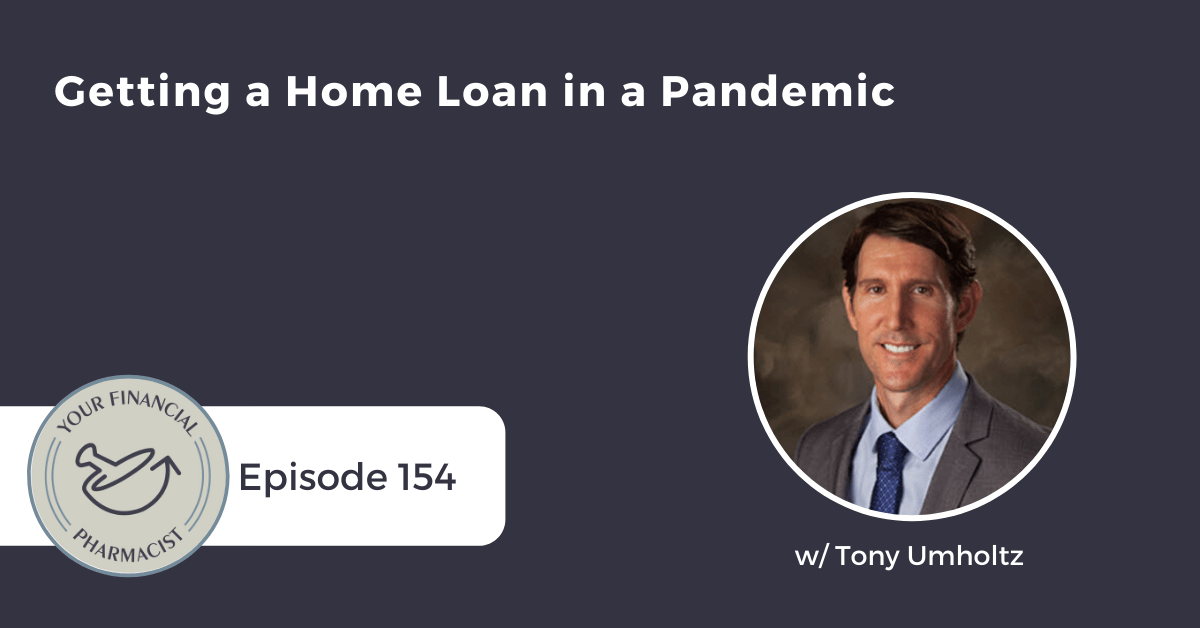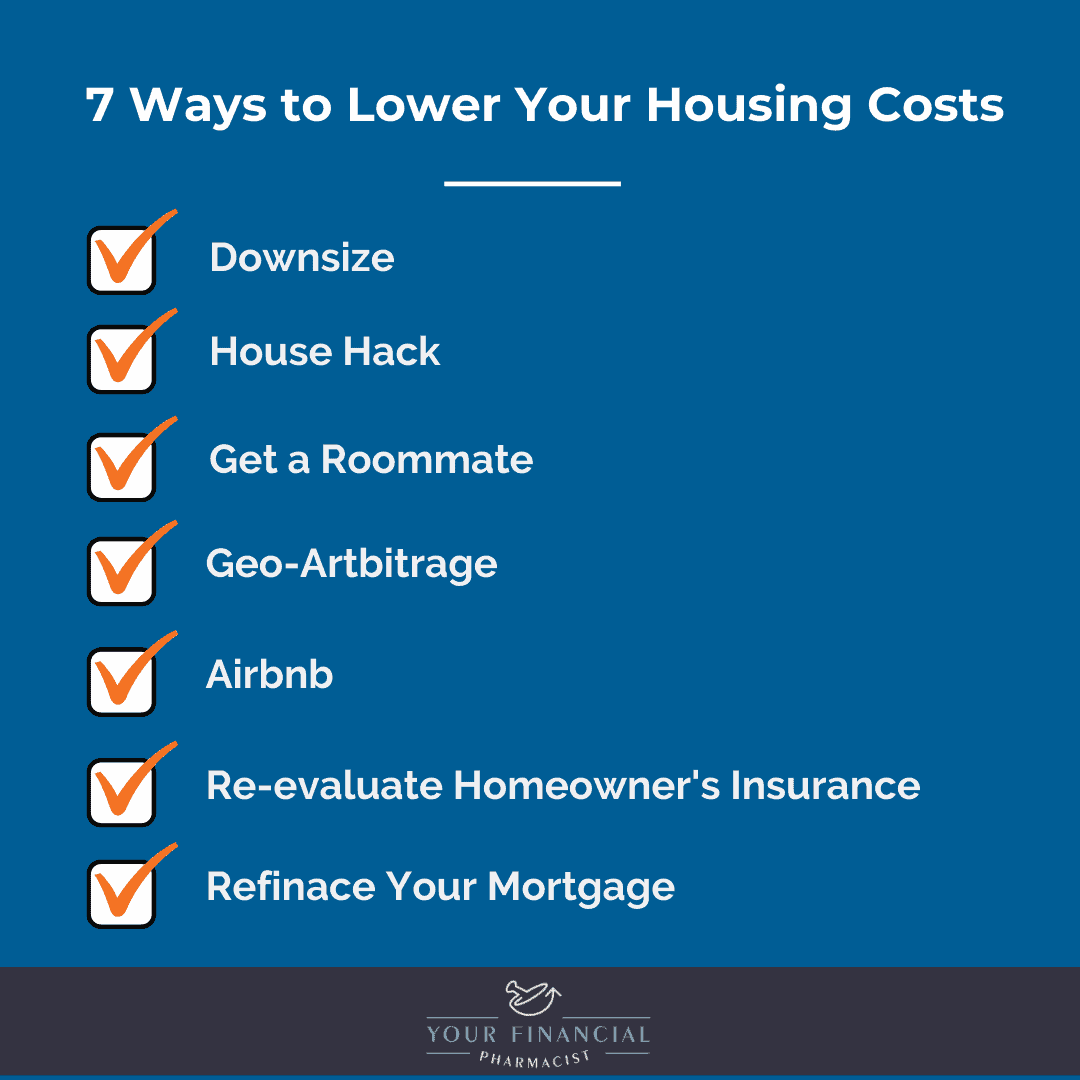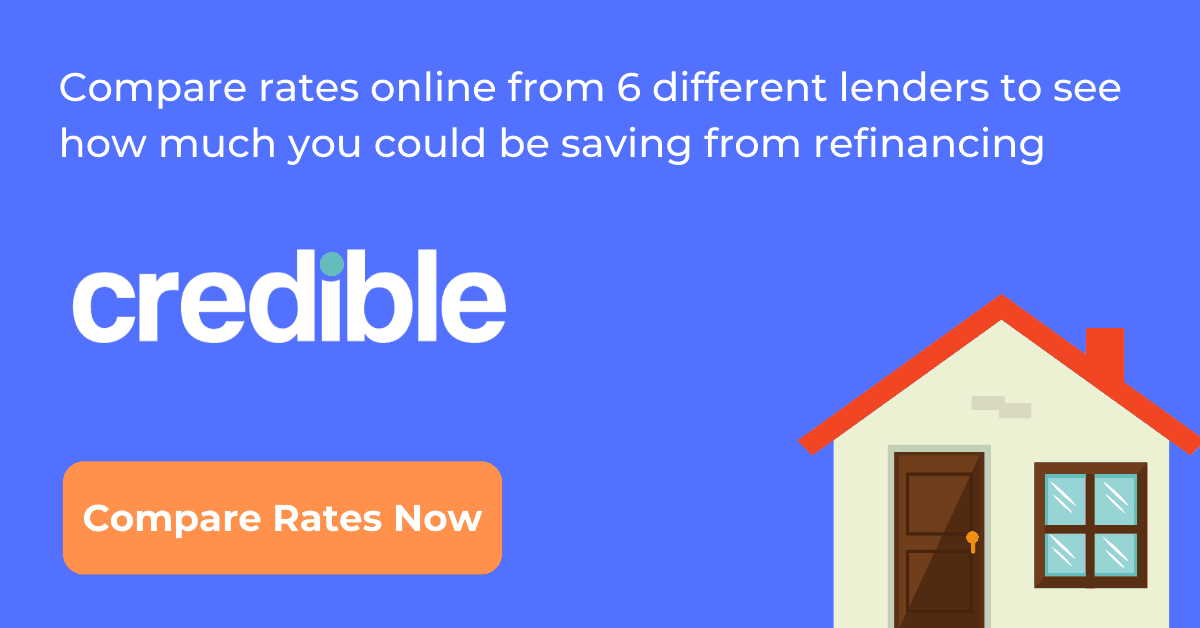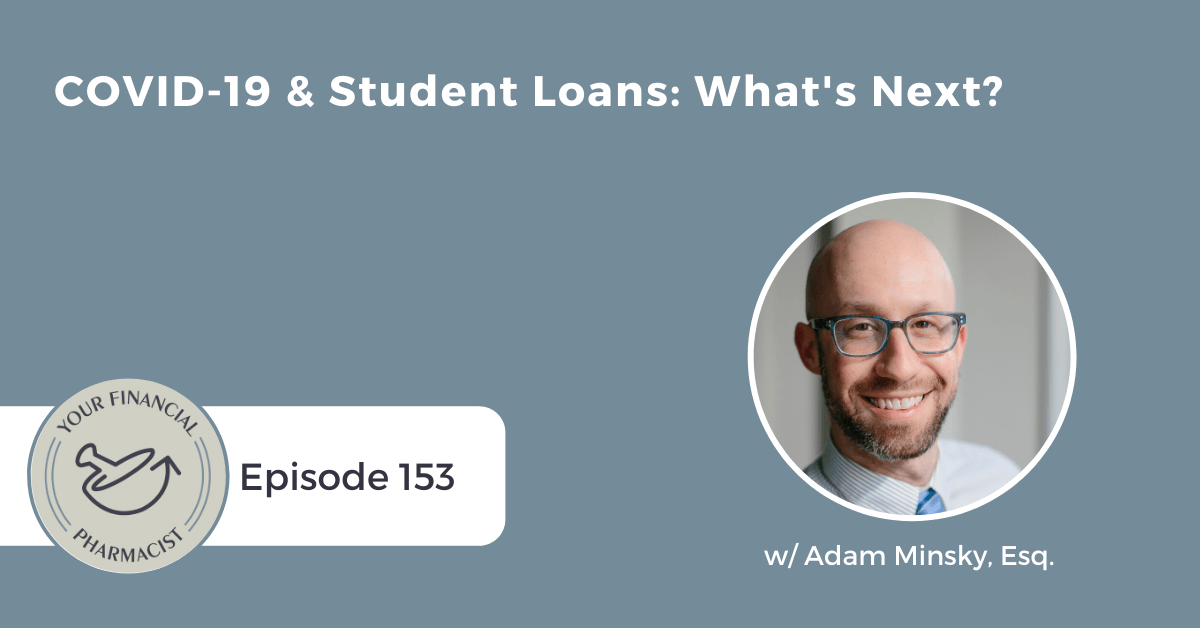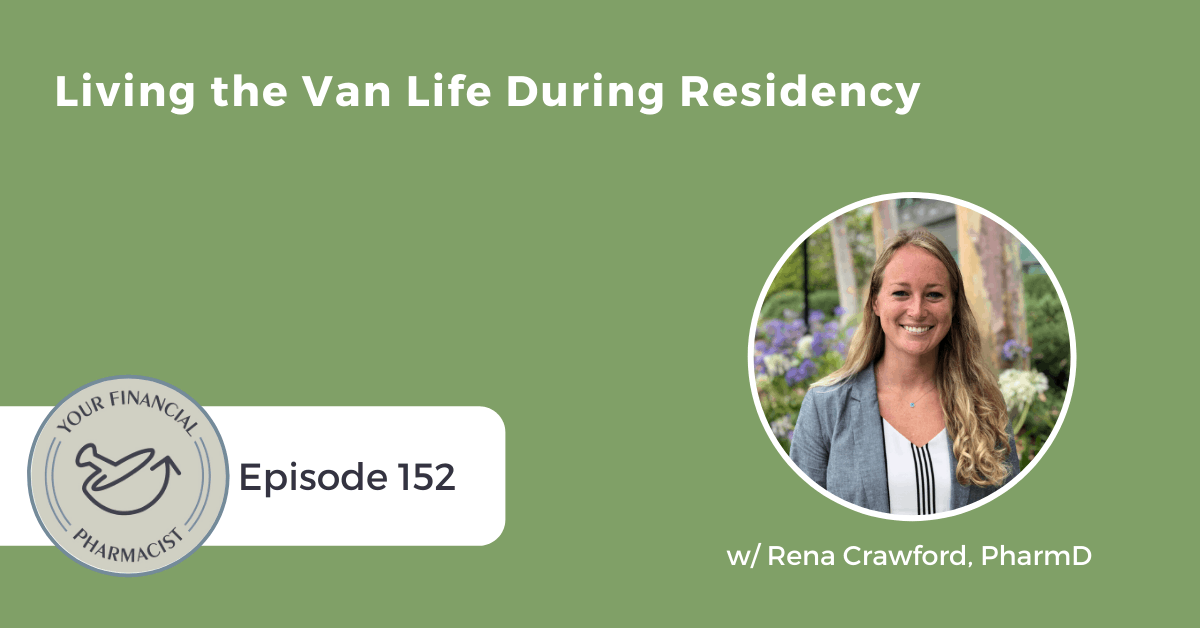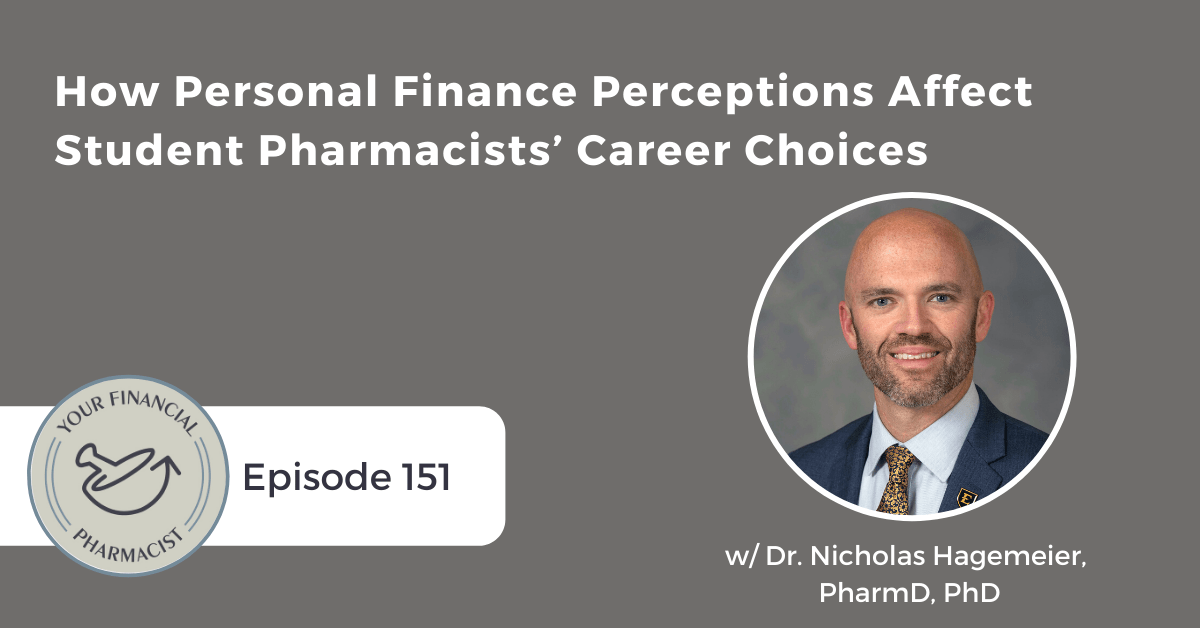Getting a Home Loan in a Pandemic
Tony Umholtz, a Mortgage Manager for IBERIABANK/First Horizon, discusses the impact COVID-19 is having on the housing market, the current landscape for those purchasing or refinancing a home, and the role of the Professional Loan Program (aka the Doctor’s Loan).
About Today’s Guest
Tony graduated Cum Laude from the University of South Florida with a B.S. in Finance from the Muma College of Business. He then went on to complete his MBA. While at USF, Tony was part of the inaugural football team in 1997. He earned both Academic and AP All-American Honors during his collegiate career. After college, Tony had the opportunity to sign contracts with several NFL teams including the Tennessee Titans, New York Giants and the New England Patriots. Being active in the community is also important to Tony. He has served or serves as a board member for several charitable and non-profit organizations including board member for the Salvation Army, FCA Tampa Bay and the USF National Alumni Association. Having orchestrated over $1.1 billion in lending volume during his career, Tony has consistently been ranked as one of the top mortgage loan officers in the industry by the Scotsman’s Guide, Mortgage Executive magazine and Mortgage Originator magazine.
Summary
On this episode, Tony Umholtz, a Mortgage Manager for IBERIABANK/First Horizon, talks through the landscape of the housing market due to COVID-19, the professional loan product and answers questions from the YFP community.
Tony begins by saying that this period of time in the real estate market reminds him more of the recession after 9/11 versus the 2008 housing market crash. In this case, real estate is fairly stable during the pandemic and, in general, folks have more equity in their home, so if they lost their job due they are more likely able to sell and walk away easier than if they had no equity in it. He also shares that interest rates are down and it’s a great opportunity to refinance or buy a home if you’re in the position to do so.
Tony then discusses the professional mortgage loan (aka doctor’s loan or pharmacist home loan) that’s available through IBERIABANK/First Horizon. First time home buyers can get a 3% down payment with no mortgage insurance, no reserve requirement and and strong interest rates. If this isn’t your first home, you’re required to have a 5% down payment. There are requirements to get the professional mortgage loan, like having a 700 or more credit score and falling into a certain debt to income ratio. If you’re interested in exploring this option further, you can find more information here.
To wrap up the episode, Tony answers several questions from the YFP community.
Mentioned on the Show
- 5 Steps to Getting a Home Loan
- Apply for Pharmacist Home Loan with IBERIABANK/First Horizon
- YFP 136: The Ins and Outs of a Pharmacist Home Loan w/ Tony Umholtz
- YFP Facebook Group
- Nate Hedrick, The Real Estate RPH
Episode Transcript
Tim Ulbrich: Hey, what’s up, everybody? Welcome to this week’s episode of the Your Financial Pharmacist podcast. And before we jump into the meat of today’s interview, I would be remiss if I didn’t emphasize that the decision to buy a home and how much home should start well before digging into the financing options. This starts with No. 1, knowing your budget and No. 2, knowing all the costs involved with home ownership to figure out whether or not you are ready. And of course, this must be considered in the context of all of your other financial goals such as student loan repayment, building an emergency fund, and investing, to name a few. So if we fast forward and you’ve determined that the decision to buy a home fits within your budget and the rest of your financial goals, now we are ready to evaluate the financing options. And one of the options that exists is a doctor of pharmacist home loan, which is some unique features that can be attractive, and we talked about that on Episode 136 of the Your Financial Pharmacist podcast, and I’ll revisit that briefly today with Tony. Now, full disclosure, IBERIABANK/First Horizon is not the only lender offering a doctor type of loan. And these loans are generally defined for higher income professionals that are at lower risk to the bank and therefore, the lender requires a lower percent down, offers competitive rates and has no Private Mortgage Insurance. And we have explored several other options that are out there, but the rate-limiting step of bringing these forward to the YFP community has the limited availability of these loans in terms of the number of states that are serviced. Therefore, as we recommend with everything else, please shop around to find the best option for your personal situation. Also, full disclosure, we do have a sponsorship relationship with IBERIABANK/First Horizon, and as with our other relationships want to be fully transparent with you. We remain committed to bringing you solutions that we have vetted and we have the chance to bring value to your financial plan. And yes, while we do get paid for promoting several of these solutions, whether that be solutions for life and disability insurance or here with a lending solution for home buying, we are committed to maintaining this approach of vetting solutions and ensuring their value to the YFP community. Alright, without further delay, let’s bring Tony back onto the show. Tony, welcome back onto the Your Financial Pharmacist podcast.
Tony Umholtz: Tim, thanks for having me. Great to be here.
Tim Ulbrich: Excited to have you back. And in Episode 136, which seems like forever ago, that was pre-COVID life, we talked about a decent amount about the types of lending options available to a home buyer, including conventional loans, VA loans, FHA loans. And so we’re not going to spend more time on that here today, but I would encourage that didn’t catch that episode or that want a refresher in that area to go back to 136. And so we’re going to spend our time together really in three areas: First, we’re going to talk about the landscape and the housing market as it relates to COVID-19. We’ll then talk about the professional mortgage loan option that’s available to folks and to many pharmacists. And then we’ll wrap up by answering questions from you, the YFP community, and I’m going to tee those questions up for Tony. So let’s jump into the landscape of the housing market as it relates to COVID-19. Tony, generally speaking, how have you seen COVID-19 impact the housing market?
Tony Umholtz: Yeah, Tim, since our last call in January, it just seems like a lifetime ago. You know, just everything we’ve went through as a country, it’s been just unbelievable in such a short amount of time. The landscape has changed very, very quickly. There’s been a lot of different things that have impacted financial markets. Obviously the stock market liquidity and the high-yield debt market, all of these came under immense pressure. Mortgages were a part of that. You know, in March when most all asset classes were selling off, many mortgages got hit hard, so mortgages on the secondary market really lost a lot of value and a lot of the REETs and aggregators that weren’t backed by the government really had gone out of — shut down operations for the most part, especially on the jumbo loans, the larger loans that aren’t backed by Fannie Mae and Freddie Mac and Ginnie Mae. Those REETs aren’t lending right now or taking loans. So been a very big hit to the mortgage market.
Tim Ulbrich: And what do you see, Tony, you know, I lived through 2008, as many of our listeners did. I was doing residency at the time and can remember so much of the housing market being tied to 2008 and that recession. What’s different here as we think about COVID-19 and its impact on the housing market? What’s different in 2020 than what we experienced in 2008?
Tony Umholtz: Yeah, great question, Tim. I started my career back in coming out of the 9/11 recession and the dot-com recession in the early part of the 2000s. And this really — as far as real estate goes, this correction and downturn reminds me more of that one in that real estate has been pretty stable throughout this. ‘08-’09 was just so devastating because of the leverage in the market. There was a lot of things that — I didn’t do a lot of the non-prime loans myself, but there was easy approvals to things like that back then. I mean, the process of getting a loan was pretty easy. It was too easy, right? And that led to this steep correction. But the big indicator in ‘08 and ‘09, Tim, was the inventory on the market. There was so much speculative building, there was so much property and vacant housing and vacant unoccupied housing that that just — and then of course we had short sales and all these things that hit. So it was the perfect storm in the real estate world where this time around, we came into this with a very healthy financial system, and we came into this downturn with a very healthy housing market in most parts of the country. Obviously every housing market is different, but on average, the U.S. housing market was very, very strong. And we were actually under normal inventory levels in the majority of the markets of the country. So that’s really been one of the catalysts for what I’m seeing is a very, very strong real estate market.
Tim Ulbrich: And do you see — you know, I know we’re projecting here a little bit — but I think of things that are unique to COVID-19 like the enhanced unemployment benefits and some of the protections that lenders have in terms of forbearance and other factors. I wonder, are we going to see challenges that may come and it’s just delayed 4, 5, 6 months from now where we might see the unfortunate situation of people that are foreclosing on homes and those types of things? Or do you see it as really a big question that’s largely dependent on what happens with unemployment?
Tony Umholtz: You know, I think it’s all about unemployment. I really think that’s the key metric here. And there has been a lot of really sad situations out there. It’s a very tough thing to go through for many, many people. And when you take a step back and just look at everything, I don’t know for sure obviously, but just kind of looking at the numbers and the data that’s out there, we have homes on average are not overleveraged like they were in ‘08 and ‘09. So most people did not have a lot of equity in their home, so it was very easy to walk away from them. This time around, you know, you may have lost your job, but you may be sitting on substantial equity in the house. So I think it’s just going to be a different situation where if you had to sell, I think you could sell and you could get out of the home. I hope that we are through this sooner than later, but obviously the more time it goes on, that’s going to cause more pain.
Tim Ulbrich: And we’re going to stay away from talking about rates in the moment because we know these can change literally by the day and sometimes within the day. But generally speaking, what have we seen that’s been unique with rates? And I know the big news obviously, the Fed cut the interest rate to 0%. I think there’s an automatic assumption that we’re going to see mortgage rates kind of hit a floor, but we’ve seen some interesting trends here over the last few months. Talk us through what we’ve been seeing, generally speaking, on interest rates?
Tony Umholtz: Well, obviously when the Fed cuts rates, the short-term rates, it doesn’t correlate exact with mortgage bonds. Mortgage bonds are calculated off the long-term trading of long-term mortgage bonds, which are actual investment bonds traded on the secondary market. So that’s really what’s going to dictate what our pricing is on mortgage, not what the Fed does on the short end of the curve. But I mean, anytime we see something like this, there’s going to be a compression in rates. And rates have come down, and I think it’s created a great opportunity for people to refinance and lower their payments and consolidate debt. And we’ve had a lot of success with debt consolidation and of course buying a home. I think it’s created just a very, very good opportunity for buyers with rates low.
Tim Ulbrich: And there’s been some interesting — you know, I’ve been reading some articles in the Wall Street Journal and New York Times about kind of the situation we’re in that’s unique that the supply, for perhaps a variety of reasons, isn’t really out there. And it’s been maintaining the prices of homes for the most part. You know, as we perhaps start to open up the economy on some level and people are getting back out, do you think part of that supply issue is just hesitancy of people listing homes and having people come in their home? Do you think we’ll see that turn around in terms of more people putting their home up for sale?
Tony Umholtz: I think so. I think as more counties and states open up, I think you’ll see that people ease up, especially into the summertime more homes will be opened up for sale. I think that will provide a little bit more inventory. But there is a lot of buyers looking. It’s a good opportunity now. And if you’re renting, you’re looking at the numbers and saying, I can own for what I’m paying in rent. You know, the other thing — I think it’s more of the major cities, I think this isn’t for sure trend, but I think you’re going to see a little bit of a move more in the suburbs just in open spaces a little bit more than the crowded cities potentially. And I think that could benefit some suburbs, newer cities and maybe even some rural areas too just as people desire more open space. It could change the desire of what people are looking for too.
Tim Ulbrich: And for those that are listening that might be struggling to make a payment or perhaps find themselves in that situation in the future, what options do borrowers have to explore? And how does that differ even between the types of loans that are out there?
Tony Umholtz: Well, the — and I’m not an expert on the forbearance.
Tim Ulbrich: Yeah.
Tony Umholtz: But that has been a great tool I think for a lot of people that are in that position. I would stress, though, that this is only something you want to utilize if you’re in a position where you cannot make payments. If you can, it can have some adverse effects potentially. I wouldn’t do it if you can make payments. But that’s been a great tool I think to help a lot of people that are in a difficult spot. But you know, as far as the tools that are out there, the fortunate thing — you know, outside of the jumbo lending, which has been hit, those, some of the options I had in March, you know, I don’t have right now. And a lot of lenders don’t have any jumbos. I feel fortunate just to have the ability to write them. But the loan amounts that are backed by Fannie and Freddie on the conventional side, some of the programs that we have that are under a $500,000 type loans, those are very, very liquid. Those guidelines are very, very strong. And that’s been a blessing that that’s intact.
Tim Ulbrich: Great. So I think that’s a great overview of some of what we’re seeing in terms of the landscape of the market with COVID-19. And I want to transition to talking about the professional mortgage loan, kind of what is it? And more specifically, what is offered with IBERIABANK/First Horizon? And you know, I think this is an area that we’ve been seeing a lot of interest among the Facebook group. We’re getting a lot of questions about it, and I’m going to bring some of those questions forward to you at the end. But what we see certainly is that one of the biggest barriers to pharmacists being able to purchase a home, you know, is typically student loan debt. And for most conventional types of loans, this greatly impacts their debt-to-income ratio and certainly could affect someone’s ability to get a loan or greatly reduce the amount that they could get approved for and often we see has a significant impact on what they’re able to save in terms of down payment. So I think that’s a good segway into where the professional mortgage loan may come in. So tell us a little bit about that loan option, generally what it is and a little bit more about the program of what IBERIABANK/First Horizon offers.
Tony Umholtz: Sure. So the program essentially allows a first-time home buyer to finance 97% of the price of the home. So you — and there’s no mortgage insurance, which is a huge benefit. And if it’s a subsequent purchase, if you owned before, it’s just 5% down. So it’s 2% more down, but the real benefit driver is that there is no mortgage insurance. There’s also not a stated reserve requirement, which is good too because a lot of these programs have reserve requirements that can be difficult when you haven’t been able to save money. I know some of our physician loan products have reserve requirements as well. And this one does not. It also carries very, very, very strong interest rates. I don’t want to get into them because everybody is different for everyone based on credit, but it tends to have some of the better rates that I can offer, even though you’re putting 3% or 5% down. But the main driver is that no PMI, I think limited reserves, and there is a max loan amount of $510,400. So that’s the cap to loan amount. You can always purchase higher than that, but if it’s more than — let’s say you found a home for $550,000 and you put 5% down, you might have to put a little bit more down to get to that $510,400 max loan amount.
Tim Ulbrich: So one of the questions, Tony, we actually had this come up in a webinar this week that we were doing with Nate Hedrick on home buying, and we were talking a little bit about this option. And as we were talking about the things that you just said in terms of competitive rates, obviously a very low percentage down that’s required, no mortgage insurance, not having to have the same reserve requirements, those types of things, the question of well, why wouldn’t somebody do it? What are the downsides to an option like this? And the only thing that I could come up with within my mind is that if for whatever reason the rate weren’t competitive, you know, with something else that they were looking at, obviously that’s a consideration or that it might put somebody in a position to buy before they’re ready to buy in terms of the low down payment. But if they’re otherwise in a healthy financial position, they’ve got a good emergency fund, they’re in a good position to buy a home, I really don’t see a whole lot of downside here. What are your thoughts?
Tony Umholtz: Yeah, I mean, we do have a debt-to-income ratios that we have to abide by. So you know, there is controls put in place. We also have a minimum credit score. It’s 700. So those would be some other things we would look at. I didn’t want to get too technical, but I guess those would be just some of the metrics. But I mean, again, it’s a very tight population that we can offer this to. It’s not everybody. So it’s got to be in these stable, this stable job position and this occupation. But yes, I think as long as you qualify, it’s not a stretch, and you’re in a good position, I think it’s a good thing as long as it makes sense for you to buy a home in your personal plan.
Tim Ulbrich: Right. Yeah, and I think it’s always a good reminder of what could be the potential downsides of having a low equity position. So if somebody were to have to move quickly for whatever reason and obviously they couldn’t use the equity to cover other costs or purchase of a new home, those types of things, but again, if you’ve got reserves or you have other plans in place to be able to account for that, then I think it’s certainly a great, great option to be looking at. Tony, one of the questions we had come forward from the community is obviously thinking about what’s happening in the economy related to COVID-19 and perhaps the lenders becoming a little bit more astringent on who they’re lending to. And even though we’re talking about a minimum credit score here of 700, do you expect that an option like this might go away in the future or change in terms of max loan amounts because of changes that might come in lending?
Tony Umholtz: I certainly hope not. I think, you know, I think — anything can happen. Risk profiles, things can change depending on how bad this downturn gets. But you know, fortunately we got through this pretty far and there’s been no changes. So hopefully it’ll stay that way.
Tim Ulbrich: Awesome. And we’ll keep our community up-to-date and we’ll provide some more information. And as a reminder, you can go to YourFinancialPharmacist.com/home-loan, get some more information about this offering. And you can connect directly from there with Tony and his team over at IBERIABANK/First Horizon. Tony, speaking of your team and what you guys have done, I want to thank you guys for giving our community members the time and attention they deserve. And I’m currently working through a refinance. It’s been a great, great experience working with you and your team. And I went on over to our Facebook group and wanted to see what some of the chatter was around their experiences with IBERIABANK/First Horizon because I knew more questions were coming up about this option, and I knew that I had seen more discussion on it. And I pulled a few of the comments from that community of people that have just posted really within the last week. And there was a lot of great, great things that people had to say. So one of our community members said, “Iberia is where it’s at.” I love the brevity of that. Somebody else said, “I’m working with Iberia now for first-time — as a first-time home buyer. They’ve been fantastic to work with. Their online system is the best, easiest I’ve used so far.” I would agree with that, very intuitive system. Somebody else said, “Iberia is great to work with, user-friendly website.” Another community member said, “We used Iberia Bank to refinance our loan last fall. Easy process.” And then I also noticed there was some feedback on RedFin that was quick, easy, great rate, and a great loan officer. So thank you for the work that you guys have done and for how responsive you’ve been to our community that has reached out to engage with you guys.
Tony Umholtz: Oh, thank you, Tim. It’s been fun. We always enjoy helping people. That’s our job, but connecting and helping people is why we do what we do. So thank you for that.
Tim Ulbrich: So I want to transition now, as I mentioned at the beginning, I want to put Tony on the hot seat. And I asked you all, the YFP community, for your questions in advance, knowing that I’d have the chance to interview Tony today. So we have several questions that have come in, and we’re going to work through those one-by-one. So Tony, the first question we have from the YFP community relates to escrow. And the question is, in addition to costs associated with title and processing of the loan, how much money does one need at closing for property taxes and insurance? And if you could briefly define escrow for those that may be hearing that term for the first time.
Tony Umholtz: Sure. That’s a great question because this can be one of the most complex parts of real estate is escrow accounts and how they work. Well, escrow what essentially is is property taxes and homeowner’s insurance and flood insurance if you’re in a flood zone would be added in then too. So property taxes can vary based upon where you live in the country. Different municipalities collect taxes a different way. I know that many states, you pay it once per year.
Tim Ulbrich: Right.
Tony Umholtz: And others, it’s quarterly. Right? There’s different counties, different parts of the country do operate differently. So we need to be sensitive to that. But you know, overall, I’ll just also give one answer to a question that comes up about escrow accounts and what they are. Banks keep escrow accounts to help pay for taxes and your insurance let’s just say on an annual basis or quarterly basis. The insurance is generally due once per year, so the bank is actually collecting typically 1/12 of your tax, your insurance payment, each month to pay that annually. Generally, you do not have the option to waive escrow unless you have an 80% loan-to-value or bullet. So if you ever hit the — most people in the audience are not going to be in that position. But if you do, if you put 20% down or more on a conventional loan, you actually can waive it and pay it yourself. Now, there’s sometimes there’s a risk grade to the loan because there is a risk if you didn’t pay those things. So there could be a little effect to the interest rate. But that is an option, and I do see some people waive them when they do have a larger equity position. But the majority of Americans have an escrow account that have a mortgage. And the taxes and the insurance and how they’re collected I think is very important to understand. When you go to closing on a purchase, you’re typically going to owe one year of your insurance premium up front. So in a case of let’s say it’s a $1,200 insurance premium, well, you’re going to have to pay and bring that $1,200 to closing. The insurance company will want their funds. And then generally the lending institution — this is really universal for all lenders in the country — they’re going to collect a two-month cushion for the account. And then depending on what time of the month you close and so forth, let’s say you close in June and your first payment is due Aug. 1, they’re generally going to collect another month to cover that one month that you’re not making a payment. So it’ll look three months of insurance, 12 months of — three months of escrow for the insurance and then 12 months of your premium. So it looks like a lot of escrow, right? But that’s how it’s done. And the same thing for taxes. So in that example, property taxes would be a couple, probably three months of taxes collected: two months to establish the account and then the one month for the month you’re missing. But and then with refinances, it’s kind of a similar situation where — not to get too technical, Tim, but I think this is important. I think if you were to go refinance and you have your current servicer, loan servicer is collecting your insurance and your taxes, they typically will refund you the full amount within 30 days of your loan payoff. So the new lender is going to come in and they’re going to look like they’re collecting, especially if you close later in the year. Because most states and counties will want payment at the end of the year, right? So like November time frame. So if you close in the fall, in autumn, it’s going to look like your lender is collecting a lot of money from you that’s being rolled into your mortgage. You know, it could be 11 months of taxes. It could be whatever, 12 months of insurance.
Tim Ulbrich: Yes.
Tony Umholtz: It’s a big number being rolled in. But you have to realize that you have almost an equal amount being sent back to you. So that’s where that idea comes into place. Do I use that check to pay down my loan? So escrow is not something that costs you anything. You have to pay them as part of homeownership, but it can look like more is being collected than — it can look like your loan is being increased on a refinance to cover that.
Tim Ulbrich: That’s a great, great explanation, Tony. I know I found that confusing as a first-time home buyer back in 2009 but also, you know, especially I think for those that are moving from one property to another, especially if you’re moving from one area to another and timing is different, I think you very much can feel like you’re double paying. And I think that definition of escrow as really the holding place and there’s going to be a refund of existing as well as receive it paying forward and just keeping that in mind. And I think that’s an important consideration because if one is paying obviously at closing for future homeowners insurance and property taxes and then that refund check comes at a later time and you forget that and you go blow it on something else, well then obviously, you know, that can have the impact that you’re trying to avoid. So is there — while we’re on this topic, I’ve often heard as you alluded to, a small percentage of people that might pull out of escrow. And you know, you mentioned that might come with a little bit of a rate risk adjustment. What are the big benefits of that? I mean, I guess the thing that comes to mind when I think about that is, you know, the downside would be it’s now on my watch, I’ve got to make sure I’m making those payments on time for property taxes, homeowner’s insurance.
Tony Umholtz: That’s right.
Tim Ulbrich: But I guess the upside would be I feel like I’ve got a better pulse on what’s going on because it’s not rolled into my monthly payment. So you know, as my property taxes might inch up or I might be more apt to try to negotiate my homeowner’s policy. So talk us through why would that move be beneficial if it’s available to somebody?
Tony Umholtz: Yeah. You know, one of the things that I’ll mention just back to answer your question but also with refinancing, a lot of people will come to me, especially right now, and they’re telling me, “Hey, my payments went up a lot because there was a shortage in my escrow account.” Right?
Tim Ulbrich: Oh, right.
Tony Umholtz: And what really happened is the bank paid your taxes and insurance more than they had collected from you, and you’re basically getting an interest-free loan and you’re just paying that back. So that’s one of the — but your payment spiked. And what we do when we refinance, we true it up. We collect the appropriate amount. But that scenario if you’re able to waive your escrow, you can control, right? You can control. And I think the main thing is a majority of people with mortgages do escrow. But if you like controlling your money and you don’t mind making a lump sum, I think that’s an advantage, just having the ability to control it yourself. I’ll be transparent, I’ve waived mine for years. I’ve always done it, but I’m a finance major. You know, I’ve been a money person my whole life, so you know, if you’re good with money and think you understand it, I think it’s fine. One thing you did mention about insurance, I mean, you have the ability to check on your insurance, even if you have an escrow account. It’s very easy. The mortgage can be changed and the insurance company can still change. But I think the main advantage is you hold onto your money, you control it. And then right now, interest rates are low and you’re not getting much on deposit accounts. But if they’re higher, you can actually earn some interest on it while you wait to pay it.
Tim Ulbrich: Yep. Great stuff. Great explanation, Tony. Another question we have from the community is what options does IBERIABANK/First Horizon have for investment properties that are not owner-occupied? Anything creative on that end?
Tony Umholtz: Well, a couple things. First thing I’ll just mention on the investment properties — and this has come up a few times with the professional produce — with multi-family, if you’re buying a multi-family property, a duplex you can still put less than 20% down. You can’t do 3% or 5%. It’s generally 15% down. There is no MI. Rates are still very, very good even though it’s multi-family. But when you get to buying a three- or a four-unit, and a four-unit is the largest residential property that we can finance. Anything above that is considered commercial. That’s a completely different type of financing. But you know, you typically have to do 20% if you’re buying a three or a four. But we still do have quite a bit of investment property options that are conventional mortgages. There is one 85% that we have for investment. It does have PMI, and PMI can be tricky and a little expensive. So I usually recommend if you’re buying investment to put 20% or even 25% down if you can because then that’s where the best rates are for investment property. But there’s a lot of liquidity still for that type of thing. And the rates tend to be pretty good. We have — we’re still doing quite a few of those purchases people are making because rents are still high. It can be a good cash on cash investment.
Tim Ulbrich: Great stuff. And so for the house hackers out there, we’ve talked about that on previous episodes, it doesn’t mean it’s not a good option, doesn’t mean it’s not something you should pursue. But it just might mean a little bit more that you have to bring down to get that purchased.
Tony Umholtz: There is one thing I will say. There are — you know, for example, FHA, you can buy a multi-unit property with 3.5% down. Now FHA does have higher PMI, but the rates are very attractive. So that can still be a good solution for owner-occupied, you know, multi-family that you’re renting the other units out.
Tim Ulbrich: Awesome.
Tony Umholtz: So that is a good tool. There’s other tools outside of our professional product too.
Tim Ulbrich: Another question we have from the community, Krista asks, “What advice for those that are considering a refi that are hesitant because of a second mortgage such as a HELOC? Can borrowers with two mortgages consolidate and still get a competitive rate?”
Tony Umholtz: That’s a really good question. Very, very good. So a HELOC is if — so there’s two ways lenders look at this. So if you purchased a home originally with a first mortgage and a second so it was part of your acquisition of the home and we refinance and combine the two together, which I think is a great decision because you get rid of a floating rate second, right? If you combine into a fixed. But that’s considered what’s called a rate and term refinance, which is going to get you the best rates. If you were to buy the home and then take out a second mortgage let’s say a month later, if we pay that off, it’s considered a cash-out mortgage. And that comes with different guidelines and can be a little bit more expensive, depending on the loan-to-value. So it is possible, but that’s often — it just changes the type of loan if it’s a subsequent, if you subsequent purchase took out the line of credit.
Tim Ulbrich: OK.
Tony Umholtz: And that comes up a lot because if you’ve done it later after you purchased, it’s a cash-out and that can change the terms of the loan.
Tim Ulbrich: Great stuff. And the last question we have, which brings us full circle to some of our conversation about what’s going on with COVID-19, from Jessica, “Does national shortage of housing units create an environment where home prices will remain high despite the economic recession?”
Tony Umholtz: You know, every market — and we touched on this a little bit in the beginning of the call, is different. Every market has different demand and supply factors. So we don’t want to completely generalize. But on average, most of the country is in a supply issue. Right? There’s not enough supply of homes on the market. And I think commercial is a whole different story. This call isn’t about commercial, but obviously commercial market can be impacted much more deeply than residential. But being that we had such a low supply of homes and interest rates being low and the housing market is pretty strong, we’re very, very busy. I’m very surprised myself. But just in the things I read and the people I talk to, now I’m kind of on the ground level with this with realtors and buyers, there’s a ton of activity. So I would have to say that the residential market is very, very well supported, very well.
Tim Ulbrich: Great stuff, Tony. And thank you to those from the YFP community who submitted questions. We’ll have Tony back on the show in the future if you have a question that we didn’t get to today. And I want to thank Tony for his time, again, for his partnership and collaboration with us for serving you, the YFP community. And to learn more steps — about the steps in consideration to getting a home loan, make sure to check out the post on the YFP site titled, “Five Steps to Getting a Home Loan.” You can do that by visiting YourFinancialPharmacist.com/home-loan. Again, YourFinancialPharmacist.com/home-loan. And right from that page, you can get the contact information to reach out to Tony. And as always, if you liked what you heard on this week’s episode of the Your Financial Pharmacist podcast, please do us a favor and leave a rating or review in Apple podcasts or wherever you listen to your podcasts each and every week. That helps others find our show. So thank you for joining, and have a great rest of your week.
Current Student Loan Refinance Offers
[wptb id="15454" not found ]Recent Posts
[pt_view id=”f651872qnv”]

